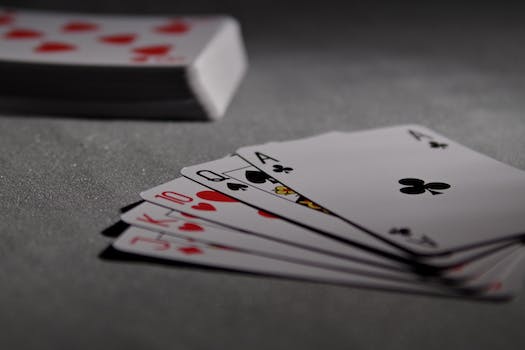-
Table of Contents
- The Fascinating World of Drawing Cards from a Pack of 52
- The Basics of a Standard Deck of 52 Cards
- Probabilities of Drawing a Specific Card
- Calculating Probabilities for Different Scenarios
- The Impact of Drawing Cards in Games of Chance
- Case Study: Poker Hands
- Exploring Permutations and Combinations
- Example: Permutations of a Poker Hand
- Conclusion
- Q&A
- 1. What is the probability of drawing a red card from a standard deck of 52 cards?
- 2. How many possible poker hands can be dealt from a standard deck of 52 cards?
- 3. What is the probability of drawing a full house in a game of poker?
- 4. How do permutations and combinations differ in the context of drawing cards?
- 5. Why are probabilities and permutations important in games of chance?

Playing cards have been a popular pastime for centuries, with a standard deck of 52 cards offering endless possibilities for games of skill and chance. The act of drawing a card from a deck may seem simple, but it holds a wealth of mathematical and statistical intrigue. In this article, we will delve into the complexities of drawing a card from a pack of 52 cards, exploring the probabilities, permutations, and implications of this seemingly straightforward action.
The Basics of a Standard Deck of 52 Cards
A standard deck of 52 cards is divided into four suits: hearts, diamonds, clubs, and spades. Each suit contains 13 cards, with ranks ranging from Ace to King. This structure creates a total of 52 unique cards in a deck, each with its own distinct value and suit.
Probabilities of Drawing a Specific Card
When drawing a card from a pack of 52 cards, the probability of drawing a specific card can be calculated using basic principles of probability. For example, the probability of drawing a King of Hearts from a standard deck of 52 cards is 1/52, as there is only one King of Hearts in the deck.
Calculating Probabilities for Different Scenarios
When considering more complex scenarios, such as drawing multiple cards or drawing cards of a certain suit, the calculations become more intricate. For instance, the probability of drawing two red cards in a row from a shuffled deck can be calculated as follows:
- Probability of drawing a red card on the first draw: 26/52
- Probability of drawing a red card on the second draw, given that a red card was drawn on the first draw: 25/51
By multiplying these probabilities together, we can determine the overall probability of drawing two red cards in succession.
The Impact of Drawing Cards in Games of Chance
Drawing cards plays a crucial role in many popular games of chance, such as poker, blackjack, and bridge. The probabilities associated with drawing cards can influence strategic decisions and outcomes in these games, making them a fascinating area of study for mathematicians and game theorists.
Case Study: Poker Hands
In the game of poker, players are dealt a hand of five cards from a standard deck of 52 cards. The probabilities of different poker hands, such as a straight, flush, or full house, can be calculated using combinatorial principles. Understanding these probabilities can help players make informed decisions during gameplay and improve their chances of winning.
Exploring Permutations and Combinations
Drawing cards from a pack of 52 cards also involves concepts of permutations and combinations. Permutations refer to the arrangement of objects in a specific order, while combinations focus on selecting objects without regard to order. These concepts are essential for understanding the various ways in which cards can be drawn from a deck.
Example: Permutations of a Poker Hand
When dealing a hand of five cards in poker, the number of possible permutations can be calculated using the formula for permutations. This calculation takes into account the total number of cards in the deck and the number of cards being dealt. By understanding permutations, players can gain insights into the likelihood of receiving specific hands in a game of poker.
Conclusion
Drawing a card from a pack of 52 cards may seem like a simple act, but it opens up a world of mathematical possibilities and strategic implications. By exploring the probabilities, permutations, and combinations associated with drawing cards, we can gain a deeper understanding of games of chance and the role of randomness in everyday life.
Q&A
1. What is the probability of drawing a red card from a standard deck of 52 cards?
The probability of drawing a red card from a standard deck of 52 cards is 26/52, or 1/2.
2. How many possible poker hands can be dealt from a standard deck of 52 cards?
There are 2,598,960 possible poker hands that can be dealt from a standard deck of 52 cards.
3. What is the probability of drawing a full house in a game of poker?
The probability of drawing a full house in a game of poker is approximately 0.00144, or 1 in 693.
4. How do permutations and combinations differ in the context of drawing cards?
Permutations involve arranging objects in a specific order, while combinations focus on selecting objects without regard to order.
5. Why are probabilities and permutations important in games of chance?
Probabilities and permutations help players make informed decisions and understand the likelihood of different outcomes in games of chance.






